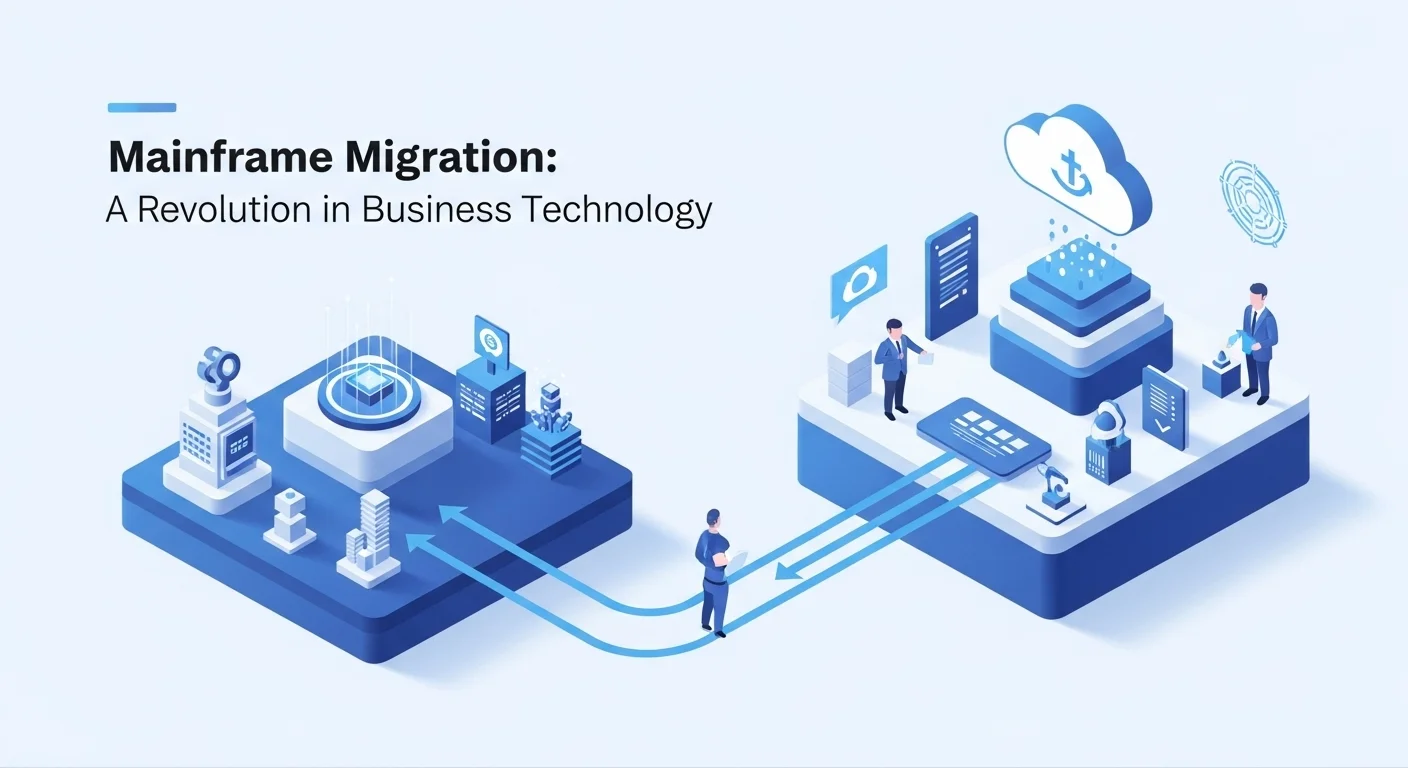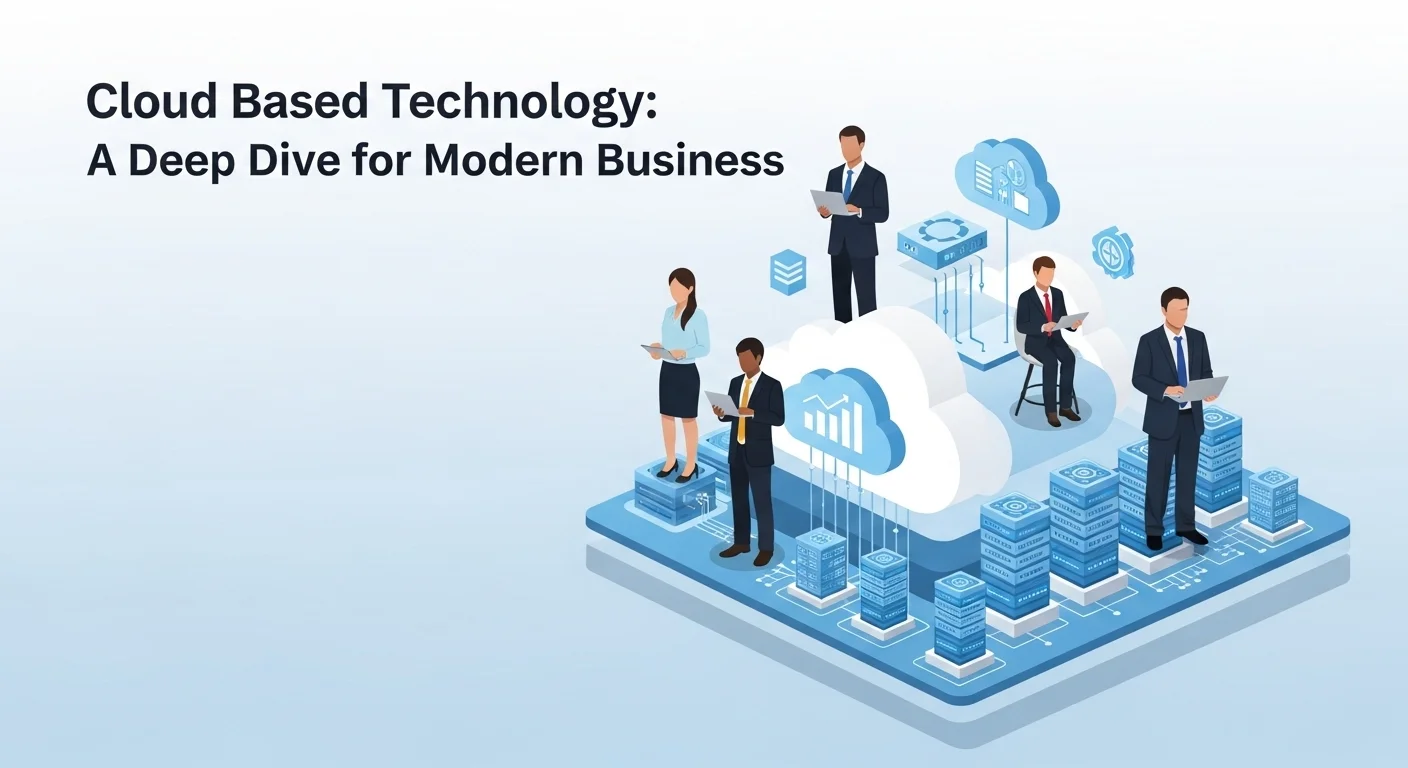What Does Automation *Really* Cost? A Plain-English Guide for Leaders & Homeowners
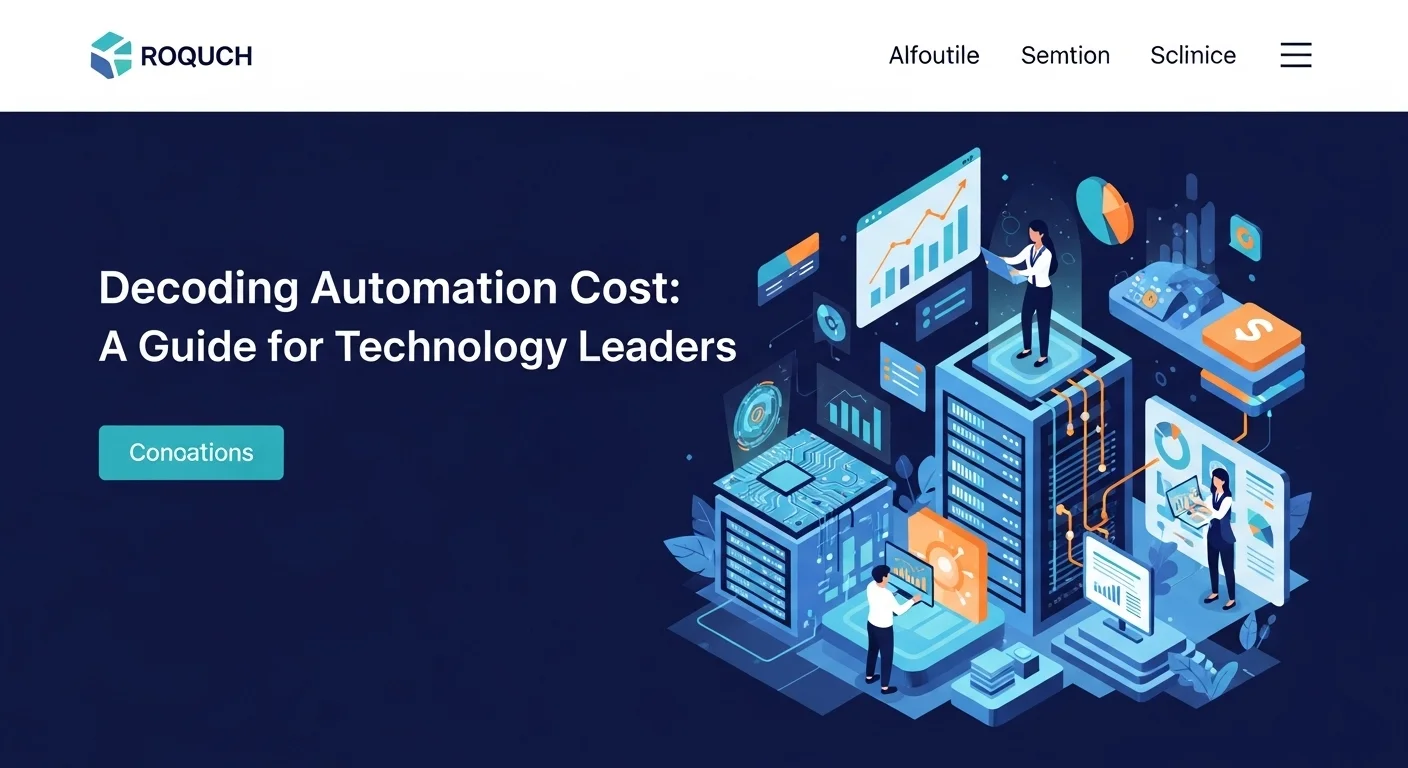
Executive Summary
I'll never forget the look on a client's face when the bill for 'integrating' their new automation software came in. It was nearly double the cost of the software itself. They had only looked at the sticker price, not the total cost of ownership, and it nearly derailed their entire project. That painful, all-too-common experience is why I wrote this guide. Whether you're a tech leader planning a major business transformation or a homeowner curious about smart technology, understanding the true cost of automation is the key to success. In this article, I'll walk you through everything you need to know, from crucial business metrics like TCO and ROI to a practical comparison of home automation systems. We'll look at the premium experience of Crestron and Control4 and contrast it with the rewarding world of DIY smart homes. My goal is simple: to give you the honest, real-world knowledge you need to invest wisely and avoid costly surprises.
Table of Contents
- What is Automation Cost, Really?
- Calculating Business Value: TCO and ROI Explained
- The Real Cost of a Smart Home: From Luxury to DIY
- Strategies to Optimize Automation Costs in Business
- Tips for Managing Your Smart Home Budget
What is Automation Cost, and Why Does It Matter So Much?
Let's be honest, 'Automation Cost' sounds like just another piece of corporate jargon. But what it really means is the total, all-in price you pay for a piece of technology, from the moment you buy it to the day you retire it. I've seen too many brilliant projects fail because the focus was only on the initial purchase price—the tip of the iceberg. The true cost includes the complex, often hidden expenses of implementation, training, and long-term maintenance. Getting a handle on this complete financial picture is the only way to figure out if your investment will actually pay off.
So, what's hiding under the water? First, there's the initial acquisition cost. This is the easy part—the price of the software license or the robotic arm. But then comes the big one: implementation and integration. This is the expert labor needed to make your new toy play nicely with all your existing systems. Think of it like a heart transplant; you're not just buying a new heart, you're paying for the highly skilled surgeon to connect all the arteries and veins. This phase can easily cost more than the technology itself.
After that, you have the long tail of operational and maintenance costs. These are the recurring bills that keep the system alive: software subscriptions, support contracts, energy usage, and the salaries of the people who keep it running. [3] And don't forget the cost of training your team. The most advanced system in the world is worthless if your employees don't know how to use it or are afraid of it. Ignoring these ongoing costs gives you a dangerously incomplete picture, turning a potential game-changer into a financial black hole.
The Strategic Importance in a Business Context
For any business today, understanding automation costs isn't just about budgeting; it's about survival and growth. When you get it right, automation can slash operational costs, practically eliminate human error, and boost productivity to new heights. I've worked with companies that have seen returns of over 200% in just a few years by automating key processes. [7] The potential is massive.
This is where two critical business metrics come into play: Total Cost of Ownership (TCO) and Return on Investment (ROI). [2] TCO is your financial reality check. It forces you to account for every single penny a piece of technology will cost you over its entire life. [16] ROI is your report card. It measures the profit you make from that investment. [2] To get an accurate ROI, you need an honest TCO. Without it, you're just guessing.
I've seen the consequences of getting this wrong. A project gets the green light based on a tempting low price, only to be torpedoed by unexpected integration fees. This leads to blown budgets, missed deadlines, and a loss of faith in technology. As experts at Gartner often point out, many companies chase small, isolated wins without a long-term plan, creating a messy and inefficient patchwork of systems. [24] A strategic, top-down approach is the only way to win in the long run.
Bringing the Concept Home: Your Smart Home Budget
This same logic applies perfectly to the world of home automation. Your home is your castle, and making it 'smart' can range from a simple weekend project to a massive renovation. The total cost of home automation can be anything from a $50 smart speaker to a $150,000+ professionally installed system. [5, 49] The key is knowing what you're paying for.
At the very top end, you have systems from brands like Crestron, Control4, and RTI. Think of these as the 'custom-tailored suit' of the smart home world. The Crestron home automation cost is the highest because it's a blank canvas; if you can dream it, a certified programmer can build it, integrating everything from your lights and shades to your home theater and security. [15] A full-home system can easily run into six figures. The Control4 automation cost is also in the premium category, offering a powerful, professionally installed experience that's a bit more standardized, making it slightly more accessible. [39] The RTI home automation cost is similar, renowned for its rock-solid control systems, especially for media rooms.
On the other end of the spectrum, you have the exciting world of low-cost home automation. This is the 'à la carte' approach. You can start your smart home journey for less than the price of a nice dinner out by buying a single smart speaker or a few smart plugs. [13, 14] Platforms like Apple HomeKit or open-source wonders like Home Assistant let you stitch these different devices together. [34] But 'low cost' doesn't mean 'no cost.' The price you pay here is often your own time—time spent researching, setting up, and troubleshooting. The decision between a professional system and a DIY adventure comes down to a classic trade-off: your budget versus your time and technical patience.
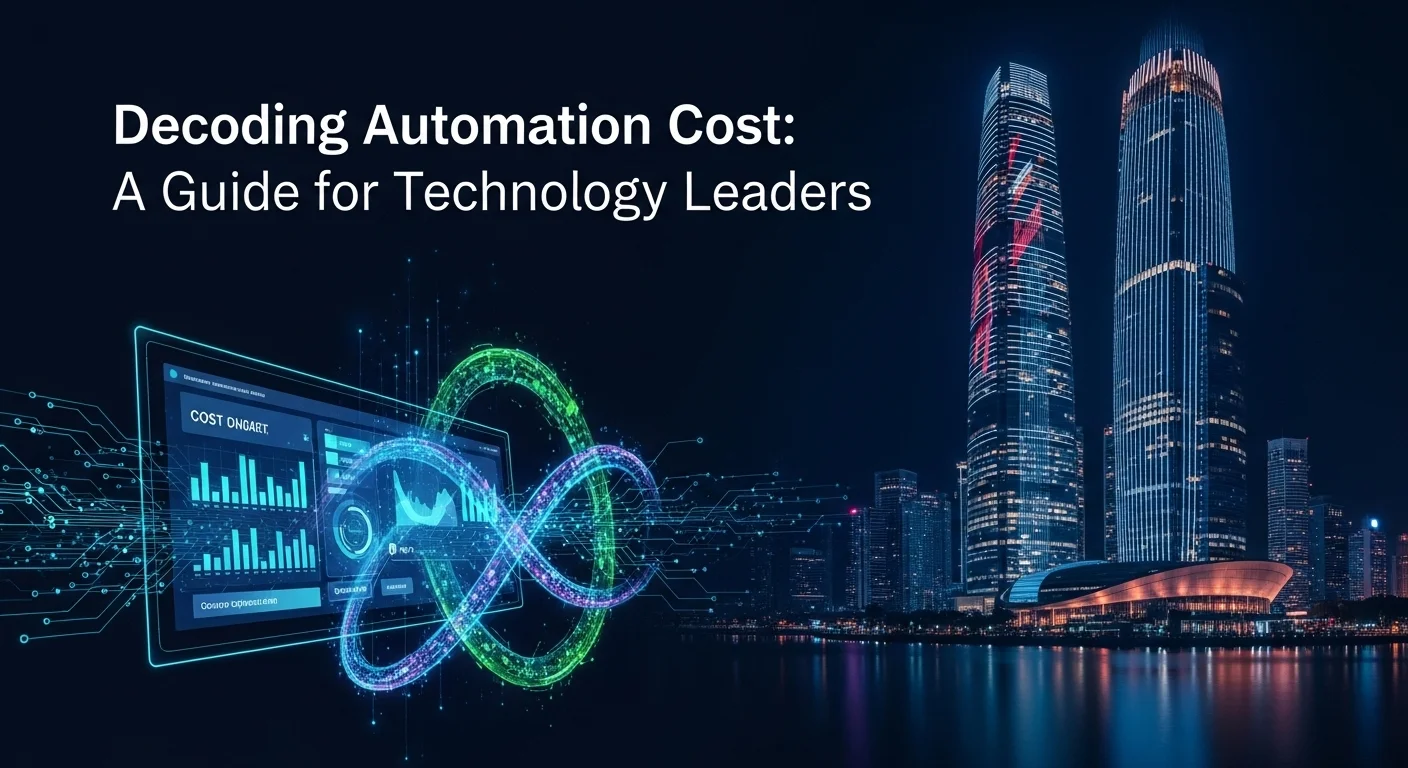
A Complete Guide to Automation Costs in Business and Home Solutions
To truly master automation, you need to be fluent in its financial language. Whether you're deploying robots on a factory floor or just want your lights to turn on when you get home, a detailed financial breakdown is your roadmap to success. Let's dive deep into the methodologies for evaluating these costs in both the corporate world and your living room.
Calculating Automation Cost in Business: The TCO and ROI Frameworks
In any serious business discussion about automation, you'll hear two acronyms over and over: TCO (Total Cost of Ownership) and ROI (Return on Investment). These aren't just buzzwords; they are the essential tools for making smart, defensible financial decisions. [2] I've found that companies that formalize this process are the ones that avoid costly mistakes and scale their automation efforts successfully. [24, 27]
Deconstructing Total Cost of Ownership (TCO)
TCO is the practice of looking beyond the price tag to uncover every cost associated with a piece of technology over its lifetime. [18] For an automation project, I always tell my clients to budget for these key areas:
- Acquisition Costs: The sticker price. This includes software licenses (which can be complex per-user or per-robot fees), servers, sensors, and any other hardware. [10, 16]
- Implementation & Integration Costs: This is the big one. It's the cost of the experts who install, configure, and connect the new platform to your existing systems like SAP or Salesforce. My advice: get a firm, detailed quote for this work upfront. It often involves project management, data migration, and custom coding. [6]
- Infrastructure Costs: Your automation needs a home. This could be on-premise servers or cloud services from AWS or Google Cloud. Cloud options reduce upfront costs but turn into a recurring operational expense. [6, 19]
- Operational & Maintenance Costs: The cost of keeping the lights on. This includes annual support contracts (don't skimp on these!), energy, and the IT team that monitors and maintains the system. [3, 18]
- Training & Change Management Costs: People are key. You must invest in training your employees to use the new tools. More importantly, you need to manage the cultural shift, helping your team see automation as a helper, not a replacement. [12]
- Lifecycle Costs: Always factor in the potential cost of downtime if a critical process fails. And remember, technology doesn't live forever; budget for the eventual cost of decommissioning and migrating to a new system down the road. [18]
Maximizing Return on Investment (ROI)
If TCO is what you spend, ROI is what you get back. The formula is simple (Net Profit / Cost of Investment), but calculating the 'profit' from automation requires looking at multiple benefits: [2]
- Hard Savings: These are the easy-to-measure gains. The most obvious is reduced labor costs, but it also includes savings from fewer errors and lower operational expenses. [12]
- Soft Savings & Productivity Gains: This is where the magic happens. When you automate repetitive tasks, you free up your smart, creative employees to focus on strategic work, innovation, and customer service. This boost in productivity drives real growth.
- Strategic Benefits: Some of the biggest wins are the hardest to put a number on. These include being more agile as a business, making better decisions with cleaner data, improving security, and ultimately making customers and employees happier.
A winning business case for automation always tells a clear story, balancing a realistic TCO with a compelling, achievable ROI. It’s a team sport, requiring input from IT, finance, and the business units who will benefit.
A Comparative Guide to Home Automation Costs
The smart home market is a perfect example of technology for every budget. Your decision-making process here is a smaller-scale version of a business case: weighing upfront cost against the long-term value of convenience, security, and fun. The total cost of home automation depends on your home's size, the number of devices you want, and the biggest factor of all: are you doing it yourself or hiring a pro? [31, 41]
High-End Integrated Systems: Crestron vs. Control4 vs. RTI
For a truly seamless, powerful, and 'it just works' experience, the professional-grade systems are in a league of their own. You're not just buying products; you're commissioning a custom project.
- Crestron Home Automation Cost: This is the Rolls-Royce. The power and customization are virtually limitless, which is why Crestron is the system of choice for luxury homes and yachts. The Crestron home automation cost reflects this, starting around $20,000 for a simple setup and soaring well past $100,000 for large, complex projects. [5, 15] The cost is a mix of premium hardware and highly specialized programming labor.
- Control4 Automation Cost: Think of Control4 as the luxury sedan of the smart home world—premium, powerful, and professionally installed, but a bit more standardized than Crestron. This makes the Control4 automation cost more accessible, with typical projects ranging from $10,000 to $30,000+. [39] It's a fantastic, robust ecosystem that delivers a high-end experience. Be aware of potential ongoing subscription fees for certain remote access features. [11]
- RTI Home Automation Cost: RTI is another major player in the pro-install space, often praised for its incredibly ergonomic and powerful remote controls. The RTI home automation cost is very competitive with Control4. It's a go-to for many installers, especially for sophisticated home theater and media room control.
With these systems, a huge part of the cost is the professional labor. You're paying for expertise in design, wiring, installation, and programming to ensure a bulletproof system. That's the value you get over a DIY approach.
The Rewarding World of Low-Cost Home Automation
The Internet of Things (IoT) has made it possible for anyone to start building a smart home. This is the modular, 'start small and dream big' path.
- The Brains of the Operation: Your journey likely starts with a smart hub or controller. For most people, this is an Amazon Echo or Google Nest device, which uses voice as the primary control. [14] If you're a tinkerer, you might upgrade to a dedicated hub like Hubitat or the incredibly powerful, open-source Home Assistant. [34, 35]
- A Universe of Affordable Gadgets: The market is full of great, inexpensive devices. You can get smart plugs from brands like Kasa for under $20 to make any lamp 'smart'. [13] Smart bulbs from Wyze, sensors, cameras—you can build a respectable system for just a few hundred dollars. [13, 20]
- The 'Hidden' Costs of DIY: The price tag is low, but the TCO isn't zero. The biggest cost here is your own time. You are the researcher, installer, system integrator, and tech support. Getting devices from different brands to work together can sometimes feel like a puzzle. But for many, including myself, the satisfaction of building a system that's perfectly tailored to your needs is priceless. [35]
In the end, analyzing automation cost—whether for a Fortune 500 company or your family's home—is about looking at the whole picture. It's about understanding the long-term commitment and ensuring your investment truly enriches your work or life.
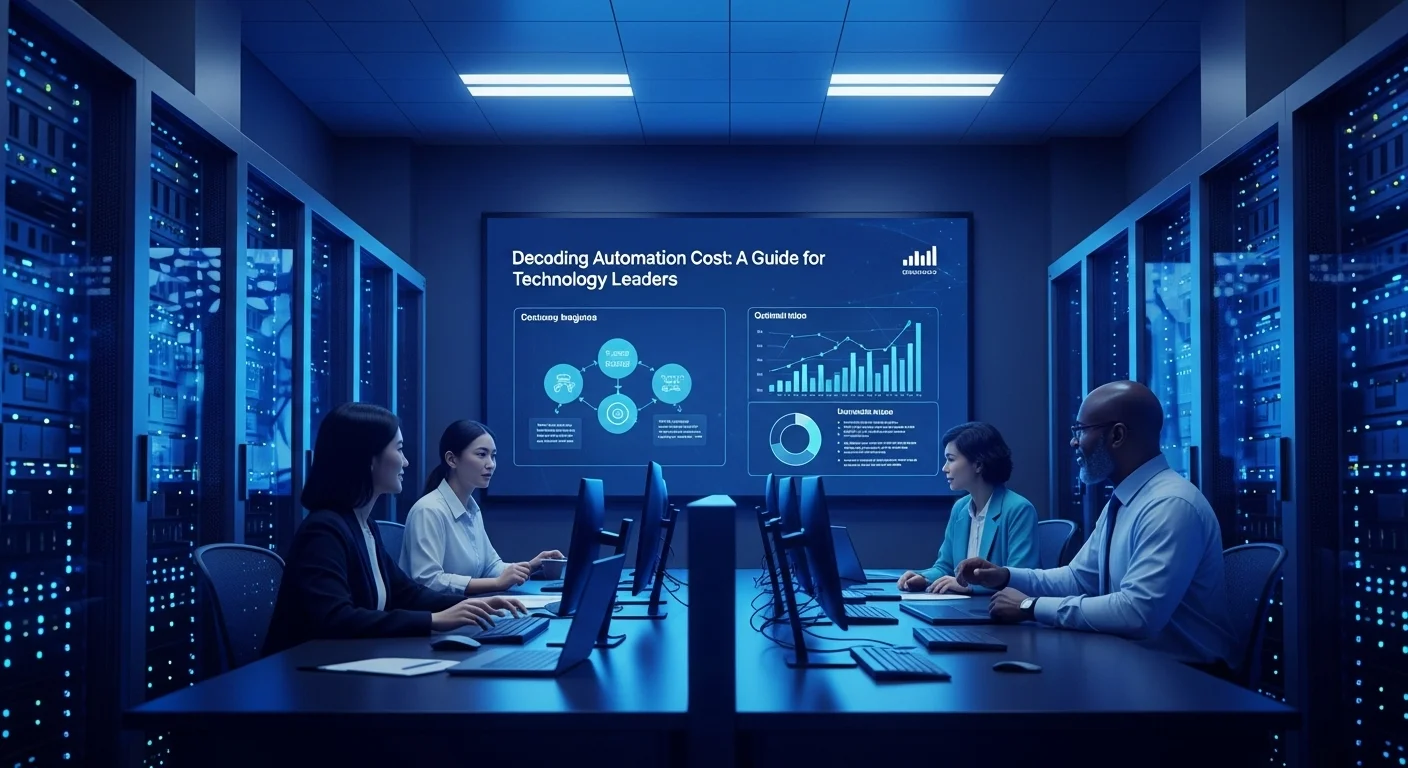
My Golden Rules for Smart Automation Spending: Tips and Strategies
Getting the most out of automation without overspending is an art. Over the years, I've seen companies thrive and homeowners create amazing experiences by following a few key principles. It's all about strategic planning and thinking about the future. Here are my most valuable tips, distilled from years in the trenches, for both business leaders and home tech enthusiasts.
Strategies for Businesses to Optimize Automation Cost
In the business world, avoiding a chaotic, expensive mess of mismatched technologies requires discipline and foresight. I've seen too many companies end up with a 'Franken-system' because every department did its own thing. Here's how to avoid that.
1. Create a Central Strategy (and Stop the Chaos)
Instead of letting automation projects pop up randomly, form a central team or 'Center of Excellence' (CoE). This group's job is to:
- Standardize Your Toolkit: Pick a primary set of approved automation platforms. This gives you more buying power, simplifies training and support, and prevents the costly problem of having ten different tools that all do the same thing. [27]
- Prioritize Like a Pro: Create a clear system to score and rank potential projects based on ROI and strategic importance. This ensures you're always working on the most valuable thing first.
- Set the Rules of the Road: Enforce best practices for how automations are built, secured, and maintained. This is how you ensure your solutions are scalable and robust, not brittle.
2. Start with a Pilot, Not a 'Big Bang'
Trying to automate everything at once is a recipe for disaster. I always advise starting with a well-defined pilot program on a single, high-impact process. This lets you:
- Test the Waters: You can validate the technology and your business case on a small scale, learning valuable lessons before you go big.
- Build Momentum: A successful pilot is your best sales tool. It proves the value of automation and makes it much easier to get funding and buy-in for the next phase.
- Sharpen Your Numbers: The real-world data from your pilot will help you create incredibly accurate TCO and ROI projections for future projects. [12]
3. Obsess over TCO, Not Just the Price Tag
When you're choosing a vendor, the initial price is often a distraction. Remember my client from the beginning? Don't be them. Dig deep into the Total Cost of Ownership. [16, 19] Always ask:
- Integration & Customization: How much will professional services cost? Does the platform have pre-built connectors for my existing software? Get this in writing.
- Support & Maintenance: What are the annual fees? What level of support do I get for that money? Is it 24/7? [3]
- Scalability: How does the price change when I add more robots or users? Look for a pricing model that won't punish you for being successful.
4. Remember the Humans
The single biggest hidden cost in any automation project is ignoring the people. This is a business transformation, not just a tech install. Allocate a real budget for:
- Upskilling Your Team: Invest in training your people for the new, more valuable roles they'll have once the boring stuff is automated. This builds morale and loyalty.
- Communicate, Communicate, Communicate: Be transparent about why you're automating and what the benefits are for everyone. Address the fear of job loss head-on and foster a culture where people and 'digital workers' collaborate.
Tips for Homeowners to Manage Home Automation Costs
Building a smart home should be fun, not a financial headache. The goal is to add convenience and a little 'wow' factor without getting in over your head. The average smart home setup can range wildly, from a couple hundred to many thousands of dollars, so a plan is essential. [5]
1. Define Your 'Why' and Start Small
Before you click 'buy' on that shiny gadget, ask yourself: What problem am I trying to solve? Is it convenience (voice-controlled music), energy savings (a smart thermostat), or security (a video doorbell)? Once you have a clear goal, start with just that one thing.
- Example: If you're tired of fumbling for the light switch in the dark, start there. A starter kit with a couple of smart bulbs and a hub is the perfect weekend project. It lets you test the waters before committing to outfitting the whole house.
2. Choose Your Ecosystem Wisely
The smart home universe is built around a few major platforms: Amazon Alexa, Google Home, and Apple HomeKit. For a smooth experience, it's usually best to pick one and stick with it. If you're looking for low-cost home automation, an Echo or Nest speaker is the perfect gateway drug. [14] If you're a DIY enthusiast who loves to tinker, a more powerful, non-cloud-based hub like Hubitat or Home Assistant will give you ultimate control to mix and match brands. [34]
3. Understand the Pro vs. DIY Trade-Off
This is the most important cost decision you'll make.
- Professional Systems (Crestron, Control4, etc.): The high Crestron home automation cost or Control4 automation cost is an investment in a perfect, hassle-free experience. [15, 39] This is your best bet if you have the budget, value absolute reliability, and don't want to become a part-time IT admin. You can even phase the project to manage the RTI home automation cost, starting with just a home theater and expanding later.
- DIY / Low-Cost Home Automation: This path gives you ultimate flexibility and a much lower initial cost. [13] The trade-off is your time. You are the system integrator. If you enjoy that kind of challenge, it's incredibly rewarding. If you're going this route, you'll get to know places like the Home Assistant community forums and tech reviewers like MKBHD on YouTube very well. [35, 26]
4. Future-Proof Your Smart Home
To avoid having a box of obsolete gadgets in a few years, think ahead:
- Look for Standard Protocols: Prioritize devices that use open standards like Zigbee, Z-Wave, and especially the new Matter protocol. This makes it far more likely they'll work with whatever new hub you buy in five years.
- Favor Local Control: Devices that can work without a connection to the internet are more private and reliable. They'll keep working even if your Wi-Fi is down or the manufacturer goes out of business. This is a huge advantage of platforms like Hubitat and Home Assistant. [35]
By following these strategies, you can confidently navigate the world of automation, making smart decisions that deliver real value for years to come.
Expert Reviews & Testimonials
Sarah Johnson, Business Owner ⭐⭐⭐
Good overview of Automation Cost, but as a small business owner, I was hoping for a few more real-world case studies for companies my size.
Mike Chen, IT Consultant ⭐⭐⭐⭐
This was a really helpful breakdown of Automation Cost. Cleared up a lot for me, though a couple of the more technical points could have been a bit simpler.
Emma Davis, Tech Expert ⭐⭐⭐⭐⭐
Excellent article! Very comprehensive on Automation Cost. It helped me a lot for my specialization and I understood everything perfectly.


